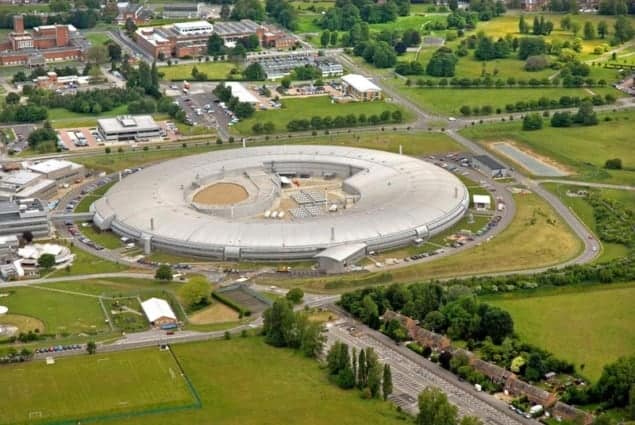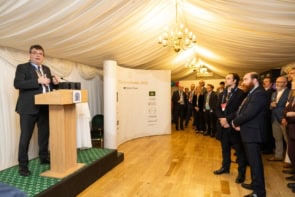
Physicists in the UK have today breathed a sigh of relief over the settlement for the country’s science budget. It had been feared that cuts of up to 25% could have been made to the science budget in today’s Comprehensive Spending Review (CSR) but that figure will now be frozen at £4.6bn for the next four years. However, physicists are still cautious of how this money will filter down into the individual research councils that fund physics projects and give grants to physicists.
The long-awaited CSR details departmental spending for the four years from 2011 to 2015. Speaking in the House of Commons, Chancellor George Osborne announced that the £21bn budget for the Department of Business Innovation and Skills (BIS) – which is responsible for funding science and research – will be cut by around 7.1% a year for the next four years. However, the science budget in BIS will not see any cuts and will be kept constant at £4.6bn over the next four years. This will still mean a reduction of around 10% once inflation is taken into account, which currently stands at 3.1%.
The announcement also comes with a guarantee that the science budget will the “ring-fenced” meaning that the money allocated for the science budget cannot be spent elsewhere. “Britain is a world leader in scientific research and this is vital to our future economic success,” Osborne said in his budget statement. “I am confident that our [scientific] output can increase over the next few years.” Osborne also singled out the Diamond Light Source synchrotron in Oxfordshire as a facility that has economic benefit for Britain and announced £69m of funding that will enable it to construct more experimental beamlines.
Challenging years ahead
“It is good news for UK science.” says Marshall Stoneham, president of the Institute of Physics, which publishes physicsworld.com. “I am confident that we will have the skill and determination to weather the next few years, and to contribute to the re-growth of our economy. In the longer term, I hope we will see a return to a steady increase in the level of funding for research, both by the public and the private sectors.”
“[But] make no mistake,” he adds. “Even with a flat cash settlement, the next few years will be challenging ones.” Stoneham warns that the science community will need to work “very hard” to retain the best young researchers and avoid any damage to the UK’s international reputation given that other countries are increasing their investment in research.
It is now expected that Research Councils UK (RCUK) – an umbrella organization of the UK’s seven research councils – which distributes the science budget, will start negotiating with the individual councils about how the £4.6bn is divided between them over the next four years. That process is expected to take until mid-December. “At this time we cannot speculate about the allocation that will be made to individual councils or the impact on specific disciplines,” says an RCUK statement.
Some physicists fear that even though the science budget will be kept constant, some councils, including the Science and Technology Facilities Council (STFC), which supports key science facilities as well as astronomy, particle physics, nuclear physics and space research, may still see its annual £490m budget cut. Indeed, BIS will allow the £525m annual budget for the Medical Research Council to rise with inflation over the CSR period, which will put some pressure on the budgets of the other six research councils. “This means that some research councils will see a cut of around 13% in real terms,” says physicist Philip Moriarty from the University of Nottingham.
The STFC’s budget has been hammered over the last few years due to a £80m hole in its finances, which was discovered in late 2007. Any further cuts to the squeezed STFC budget would likely do further harm to grants for UK physicists because the bulk of the STFC’s budget goes on subscriptions to multinational labs such as CERN, which are difficult to reduce or pull-out from entirely. “We have seen before with the STFC that a flat-cash settlement can result in grant reductions of 25–40%,” says particle physicist Mark Lancaster from University College London.
Some fear that RCUK’s Large Facilitates Capital Fund, which typically has a budget of £100m per year to go on the construction of new facilities or on upgrading existing facilities, could be cut by as much as 50%. Indeed, a statement from RCUK released today says that the cut in capital funding will present “significant challenges to research”.
As some of the budget for the ISIS neutron scattering centre in Oxfordshire and part of the CERN subscription comes from the capital fund, any money to pay for those facilities would likely have to be found elsewhere. “It is likely that any shortfall will end up coming out of grants for researchers,” says Lancaster.



